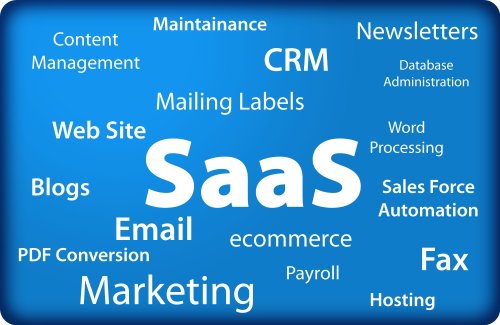Editor’s Note: This guest post is written by Doug Pepper, who is a General Partner at InterWest Partners where he invests in SaaS, mobile, consumer internet and digital media companies. He blogs at dougpepper.blogspot.com.
IPOs are hot again. Naturally, the press is focused on high-profile offerings like Facebook’s. But, I think there is a more important group of companies going public: Smaller, less sexy Software-as-a-Service (SaaS) startups. Think of it as the Sexy IPOs versus the SaaS-y IPOs.
They aren’t household names, but the most recent SaaS IPOs (Cornerstone, Jive, Brightcove and Bazaarvoice) are doing better in the public markets, on average, than the Sexy IPOs of LinkedIn, Groupon and Zynga.
But it isn’t just their performance that matters — the recent IPOs of those cloud-based software companies (plus earlier ones from Successfactors, Netsuite, and Concur) are harbingers of several important trends:
Healthy Valuations with sub-$100M in Revenue
The SaaS companies have gone public with annual revenue in the range of $50-$100M and are valued at anywhere from $500M to $1B at IPO. Several are now trading well above $1B. VCs have been waiting for 10 years for the public markets to consistently accept new issues with less than $100M in revenue. This is an important development as it means VCs can exit companies sooner in the investment cycle.
Strong Trading Performance since IPO
As a group, Cornerstone, Jive, Brightcove and Bazaarvoice are up 64% since their IPOs. Earlier SaaS IPOs like Concur and Netsuite are up 375% and 88%, respectively, since their debuts. Finally, don’t forget that Successfactors went public at $10/share and was recently acquired by SAP at $40/share!
Implications: The SaaS IPOs are training public market investors that they can generate strong returns when they invest in the IPOs of VC-backed companies with sub-$100M in revenue. And, these companies are being valued highly enough so that VCs who invested early can make excellent returns. In many cases, these IPOs are “fund-makers” for the early stage VCs. And when they trade up in the aftermarket, it is a win-win for both VC and public market investors.
Of course, Linkedin, Groupon, and Zynga are absolutely phenomenal for the VCs involved. I wish I had been an early stage investor in any or all of these. And, they have proved to LPs that VCs can, once again, generate serious returns for them. But, just like Google didn’t ignite a rush of IPOs starting after 2004, I don’t think the sexy IPOs will launch a huge wave of IPOs. Why not? First, there just aren’t enough companies at that scale to expect VCs to have a consistent inventory of them. Second, several of these companies have gone public too late in their growth cycles to generate good long-term returns for public investors (my opinion). So, public investors may not be clamoring for more of them.
So, why are SaaS companies so attractive to public market investors and trading up in the aftermarket? I asked that question of a friend at a hedge fund that invests in IPOs. Here is his response (I bolded what I believe are his key points):
- SaaS companies are driven less by media hype and more by the investor appetite for attractive recurring revenue business models offered by the SaaS platform.
- These companies are growing rapidly as a result of customers shifting functions away from in-house solutions to more flexible and enhanced platforms that help increase revenues, improve productivity and reduce costs.
- Investors are not concerned by the lack of GAAP earnings, because there is a comfort driven by the 90-95% customer retention rates and an understanding that investing capital back in the business makes sense during the early phase of adoption.
- These factors lead to more defensible businesses that make for attractive takeout candidates.
In a nutshell, he is reiterating what Bill Gurley noted in his excellent post about what constitutes high quality revenue. In this case, SaaS companies solve critical problems for enterprises and generate sustainable and predictable recurring revenue with rapid growth.
The good news for the VC industry is that we have significant inventory of companies that fit this profile ($50-100M revenue and rapid growth). For example, companies like Demandware, Box.net, Workday, Yammer, Badgeville, GetSatisfaction and Marketo should all reach critical mass in the next 12-24 months. And, there are many others.
I know from experience because my firm, InterWest, is an early investor in several companies in this category including Marketo, GetSatisfaction, Spredfast, Varolii, Cloud9, Aria Systems and Cubetree (acquired by Successfactors). These businesses take time to build and require experienced leaders to grow them. Not incidentally, we believe they also require patient VCs that are laser focused on this business model.
Image from GetApp.com
